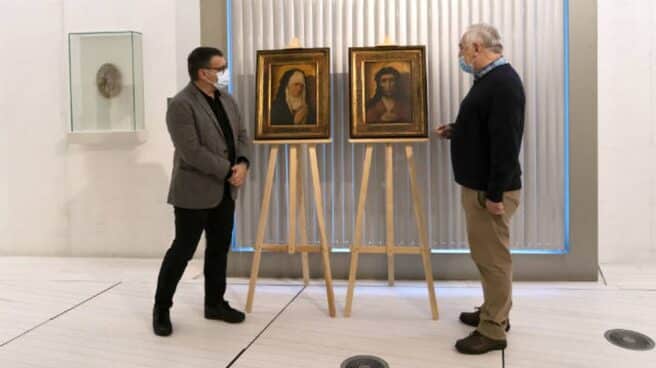

Paintings stolen by the Nazis
The Pontevedra Museum plans to deliver to Poland tomorrow, Wednesday, two paintings that were identified in December 2020 by their origin from Nazi looting, a diptych composed of mourning and 15th-century ecce homo.
After two years of paperwork, the exhibits will return to their country of origin and will be collected by a delegation of the Polish government led by the director of the Department of Cultural Property of the Ministry of Culture and National Heritage of Poland, Elzbieta Rogowska.
Two works that will return to Poland belonged to the Czartoryski collectionstolen by the authorities of the Nazi regime in Goluchow during World War II, according to documentation provided by the Polish Ministry of Culture.
Both paintings after leaving Warsaw in 1944.They appeared in an art store in Madrid in 1973. and they arrived at the Pontevedra Museum in 1994 as part of the purchase of the José Fernández López collection of 313 paintings by various authors and chronologies.
Experts don’t know where or when they were acquired by Fernandez López, but all indications are that he may have done so at the Sala Parés in Barcelona, or at the El Cisne Gallery in Madrid, of which he was a regular customer.
An art company will take care of the paintings that They will fly by plane to Poland.where they will be stored in the Poznań National Museum.
“This restitution is an act of justice that we are extremely proud of,” Cesar Mosquera, vice president of the Pontevedra Provincial Council, the political manager of the Pontevedra Museum, said on Tuesday.
“We did what we had to do” return these two works of arta gesture that “we hope will serve as an example for other museums and private collections,” Mosquera said.
Enjoy artwork knowing that Nazi looting continues “This is unacceptable,” the provincial vice president added, even if, as in the case of the Pontevedra Museum, after they were acquired “legally and with good intentions.”
The diptych was Originally attributed to the Dutch artist Dirik Bouts.the main representative of the so-called Leuven school, but in the end it turned out that this was the work of someone from his group.
Currently, the economic valuation of each of the tables for insurance purposes is about 130,000 euros.
Source: El Independiente